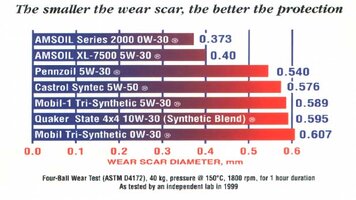I'm back. Just changed the oil in my truck and only drained the oil in me bike. It was very clean for just over 2k miles. Ok, way freakin cleaner than with any other mineral or part syn, that I've used up until now. I drained it through a thin white clothe in to a clear container. It's still draining out of the clothe as I type. Will check it tomorrow nite along with the filters. But I will say that the Al metallic swirls in the oil are not as apparent. Very faint.
Oil level: I mentioned this once before, or was it twice - can't remember. Am I repeating myself again? Yogi Berra said it best! Any way, when my 72 grew into a 750 last June, I put a 75 dipstick in it, which most of you know is about a 1/2" down from the 256 stick. I also added that little spring steel clip that baffles the breathers. 256's have none. Not bragging, well, yes I am, on all 3 changes, the level didn't really move from the top mark. Yes, when driven hard, but actually I'm kinda still breaking it in, haven't gone over 6K rpm yet, I get a few drops out of the breathers. For instance, after the Dragon run and when I flew back on the Nantahalla (sp) Skyway.
I can't very well compare the old with the new, but old 72, 650, needed oil almost every 200 miles, and there was no way that I would trust it to run at the lower mark. Ok, no balls! Call me a chicken. No really, go ahead, come on!



